Pupusas are soft, stuffed corn tortillas that are loved for their comforting texture and delicious flavor. Originating from El Salvador, this traditional dish combines the richness of masa (corn dough) with flavorful fillings such as cheese, beans, or pork. The result is a satisfying and hearty meal that’s perfect for breakfast, lunch, or dinner. What makes Pupusas Recipe so special is their simplicity—every bite carries the taste of homemade comfort and cultural pride.
Origin of Pupusas
Pupusas are considered the national dish of El Salvador, with roots that trace back to the Pipil tribes who lived in the region over a thousand years ago. They were originally made with simple corn dough and beans, evolving over time with the addition of cheese, meats, and vegetables. Today, pupusas represent Salvadoran identity and are often enjoyed with curtido—a tangy cabbage slaw—and tomato salsa. Their growing popularity around the world reflects how timeless flavors can connect people across cultures.
Ingredients of Pupusas Recipe with Pictures
- Masa Harina (Corn Flour)
This is the main ingredient that forms the dough. It gives pupusas their structure and authentic corn flavor.
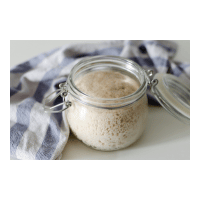
- Water
Hydrates the masa harina, creating a soft, pliable dough.

- Salt
Balances the flavors and enhances the natural sweetness of the corn.
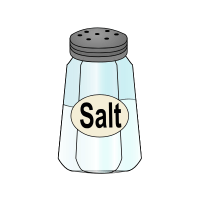
- Quesillo (or Mozzarella Cheese)
Adds creamy, melted texture inside the pupusa.

- Refried Beans
Brings a smooth, savory filling that complements the dough.
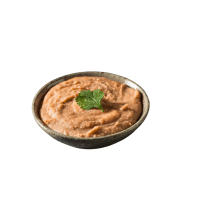
- Chicharrón (Cooked Ground Pork)
Adds a rich, meaty flavor for a traditional Salvadoran touch.
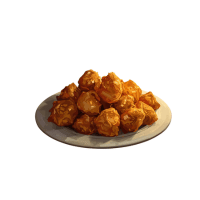
- Oil
Prevents sticking during cooking and helps the pupusas brown evenly.
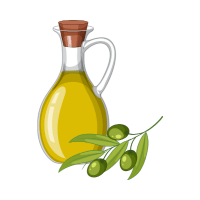
Ingredients with Quantities
| Ingredient | Quantity |
|---|---|
| Masa harina (corn flour) | 2 cups |
| Warm water | 1 ½ cups |
| Salt | ½ teaspoon |
| Quesillo or mozzarella cheese | 1 cup, shredded |
| Refried beans | 1 cup |
| Cooked ground pork (chicharrón) | 1 cup |
| Oil (for cooking) | 2 tablespoons |
Step by Step Pupusas Recipe
-
Prepare the Dough:
In a large bowl, mix masa harina, salt, and warm water. Stir until a soft dough forms. It should feel smooth but not sticky. If it’s dry, add more water, one tablespoon at a time. -
Prepare the Filling:
In another bowl, combine refried beans, cheese, and cooked pork. Mix until well combined. You can adjust the ratio based on your taste preference. -
Form the Pupusas:
Divide the dough into small balls, about the size of a golf ball. Flatten each one slightly with your hands, creating a small well in the center. Add about one tablespoon of filling inside, then carefully close it by folding the dough over and sealing the edges. Flatten it gently again into a thick round disc. -
Cook the Pupusas:
Heat a lightly oiled skillet or griddle over medium heat. Place the pupusas and cook for about 3–4 minutes per side until golden brown with light char marks. They should puff slightly when done. -
Serve Hot:
Enjoy warm pupusas with curtido (pickled cabbage slaw) and tomato salsa for a traditional Salvadoran experience.

Common Mistakes to Avoid
-
Dry Dough: If the dough cracks when shaped, it’s too dry. Add small amounts of warm water until it becomes smooth.
-
Overfilling: Using too much filling can cause the pupusas to tear open while cooking. Keep it balanced for a neat seal.
-
High Heat: Cooking on high heat burns the outside before the inside is cooked. Always use medium heat for even results.
-
Not Sealing Properly: If you don’t close the dough properly, the filling will leak out. Gently pinch and smooth the edges before flattening.
Tips for Perfect Pupusas Recipe
-
Keep Hands Moist: Wet your hands lightly with water or oil when handling the dough to prevent sticking.
-
Rest the Dough: Letting the dough rest for 10 minutes before shaping improves texture and elasticity.
-
Use a Non-Stick Pan: It ensures even browning and prevents tearing.
-
Serve Fresh: Pupusas taste best when freshly cooked and still warm.
-
Pair with Curtido: The tangy flavor of curtido balances the richness of the pupusas beautifully.
Popular Variations of Pupusas Recipe
-
Pupusas de Queso: Filled with melted cheese only for a simple, creamy taste.
-
Pupusas Revueltas: A combination of beans, cheese, and pork—this is the most traditional and loved version.
-
Pupusas de Frijoles: Made only with refried beans for a lighter, vegetarian-friendly option.
-
Pupusas de Loroco: Stuffed with loroco, a Salvadoran flower bud that gives a unique, herbal flavor.
Serving Suggestions
Pupusas are best enjoyed hot off the griddle with curtido—a crunchy, vinegar-based cabbage slaw—and a simple tomato salsa. You can also serve them with avocado slices, hot sauce, or fresh lime wedges for extra flavor. They make an excellent breakfast or lunch option, and they pair wonderfully with a cup of coffee or a chilled beverage.
Nutritional Information
| Nutrient | Amount (per serving) |
|---|---|
| Calories | 250 kcal |
| Protein | 10 g |
| Carbohydrates | 28 g |
| Fat | 10 g |
| Fiber | 4 g |
| Sodium | 300 mg |
| Sugar | 1 g |
Why People Love Pupusas ?
People love pupusas because they’re warm, comforting, and versatile. Each bite combines the soft texture of masa with flavorful, melty fillings. They’re affordable, easy to make, and represent family, tradition, and togetherness. Beyond taste, pupusas connect people to Salvadoran heritage, making them more than just food—they’re a symbol of pride and home.
Benefits of Pupusas Recipe
1. Nutritious and Filling
Pupusas are made from corn masa, beans, cheese, and sometimes meat—all of which are rich in nutrients. Masa harina provides complex carbohydrates that supply lasting energy, while beans and cheese add protein and fiber, keeping you full for longer.
2. Naturally Gluten-Free
Since pupusas are made with corn flour instead of wheat, they’re naturally gluten-free. This makes them a great option for people with gluten intolerance or celiac disease.
3. Good Source of Protein
The fillings often include cheese, beans, or pork, which are high in protein. Protein helps build and repair body tissues and supports muscle growth, making pupusas both satisfying and nourishing.
4. Supports Digestion
Corn masa and beans contain dietary fiber, which promotes healthy digestion and prevents constipation. Eating pupusas with curtido (fermented cabbage slaw) adds probiotics that further improve gut health.
5. Comfort Food with Cultural Value
Beyond nutrition, pupusas have emotional and cultural benefits. They represent Salvadoran heritage, unity, and family tradition. Sharing them brings people together and offers a sense of comfort and belonging.
6. Versatile and Customizable
You can fill pupusas with almost anything—vegetables, cheese, beans, or meats—making them suitable for different dietary preferences. This versatility allows you to enjoy them in multiple ways without getting bored.
7. Affordable and Easy to Make
The ingredients are simple and inexpensive, yet they create a flavorful and hearty meal. This makes pupusas a cost-effective dish that feels special without needing fancy ingredients.
Disadvantages of Pupusas Recipe
1. High in Calories
Depending on the filling and the amount of oil used, pupusas can be quite calorie-dense. A few pieces can quickly add up in calories, especially when loaded with cheese or pork. Eating them too often may contribute to weight gain.
2. Can Be Greasy
When too much oil is used during cooking, or when the filling contains fatty meats, pupusas can become greasy. This not only increases fat intake but can also make them feel heavy or oily.
3. Not Ideal for Low-Carb Diets
Because masa harina is made from corn, it contains carbohydrates. Those following a low-carb or keto diet may find pupusas unsuitable for their meal plan.
4. May Cause Digestive Discomfort (for Some)
While fiber is generally good for digestion, eating too many beans or cheese-filled pupusas might cause bloating or gas in some people, especially if they’re not used to high-fiber foods.
5. Nutritional Imbalance if Overeaten
Pupusas are delicious, which makes it easy to overindulge. However, eating too many without balancing with vegetables or fresh sides can lead to a diet high in fats and carbs but low in vitamins.
6. High Sodium Content
Store-bought fillings or cheese can add extra sodium. Consuming too much sodium regularly may increase the risk of high blood pressure.
7. Time-Consuming for Beginners
Making pupusas requires practice to get the dough texture and filling balance right. Beginners might find the process tricky at first, and it can take time to master sealing them properly.
FAQs
1. What are pupusas made of?
Pupusas are made of masa harina dough filled with cheese, beans, or meat.
2. Can I use all-purpose flour instead of masa harina?
No, masa harina gives the authentic flavor and texture that flour cannot replicate.
3. How do I keep pupusas from cracking?
Keep the dough moist by adding warm water if it feels dry.
4. Can I bake pupusas instead of frying?
Traditionally, they’re cooked on a griddle, but baking is possible for a healthier version.
5. Are pupusas gluten-free?
Yes, since they are made with corn flour, they are naturally gluten-free.
6. Can I freeze pupusas?
Yes, you can freeze uncooked pupusas and cook them later directly from frozen.
7. What’s the best cheese for pupusas?
Quesillo is traditional, but mozzarella or Monterey Jack also work well.
8. How long can I store cooked pupusas?
Keep them refrigerated for up to 3 days and reheat on a pan.
9. What side dishes go best with pupusas?
Curtido and tomato salsa are classic pairings that balance the flavors.
10. Are pupusas the same as arepas?
No, although similar in appearance, arepas are from Venezuela and Colombia and use different dough and fillings.

Conclusion
Pupusas are a beautiful blend of tradition, flavor, and comfort. They carry centuries of Salvadoran heritage and bring warmth to every table. Whether filled with cheese, beans, or pork, each pupusa tells a story of love, culture, and simplicity. With the right ingredients, a bit of patience, and these easy steps, you can bring the taste of El Salvador into your kitchen and enjoy a dish that people around the world can’t get enough of.
